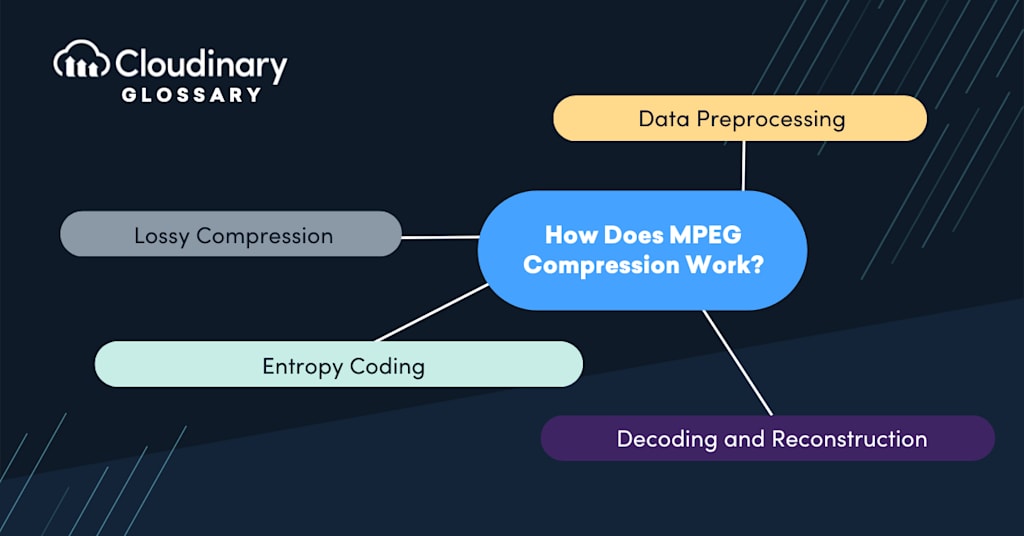What Is MPEG Compression?
MPEG compression is a standardized method of reducing the file size of digital video and audio content without significantly affecting the quality perceived by viewers or listeners. Standing for the Motion Picture Experts Group refers to the organization responsible for developing these standards and the various compression techniques themselves.
This technology is crucial because raw, uncompressed media files can be extremely large and difficult to store, stream, or download efficiently. MPEG compression transforms these files into a more manageable size, making them practical for everyday use on various digital platforms and devices.
Compression works by employing complex algorithms to identify and eliminate redundant or non-essential data within the media files—a process often referred to as “lossy compression.” This includes exploiting the perceptual limitations of human vision and hearing, such as removing sound frequencies that are inaudible to the human ear or minimizing details in video that are unlikely to be noticed by the human eye.
How Does MPEG Compression Work?
MPEG compression operates through a series of intricate encoding and decoding steps, each aimed at reducing the data size of audiovisual content without compromising perceptible quality.
The process involves these key stages:
- Data Preprocessing – Before compression begins, the audio and video data undergo preprocessing, including techniques such as color space conversion, downsampling, and transformation to optimize the data for compression.
- Lossy Compression – MPEG compression employs lossy compression algorithms, which exploit redundancies in the data and discard non-essential information based on human perception. This step significantly reduces the data size while attempting to preserve visual and auditory quality.
- Entropy Coding – Following lossy compression, entropy coding techniques—such as Huffman and arithmetic coding—are applied to further compress the data by efficiently representing recurring patterns and reducing the entropy in the encoded bitstream.
- Decoding and Reconstruction – Upon transmission or storage, the encoded MPEG data undergoes decoding and reconstruction processes, where the compressed data is unpacked and transformed back into a format suitable for playback or further processing.

Where is MPEG Compression Used?
MPEG compression finds wide-ranging applications across numerous domains, including:
- Digital Television and Broadcasting – MPEG compression standards, notably MPEG-2 and MPEG-4, are instrumental in delivering high-quality audiovisual content over digital broadcasting networks, enabling the transmission of standard and high-definition television signals to viewers worldwide.
- Internet Streaming and VOD – Online streaming platforms and VOD (Video on Demand) services leverage MPEG compression to efficiently deliver video content over the internet, ensuring smooth playback experiences across various devices and network conditions.
- Physical Media Formats—MPEG compression has been pivotal in the development of digital media formats, such as DVDs, Blu-ray discs, and digital audio/video files. It optimizes storage capacity and enables the widespread distribution of multimedia content.
- Video Conferencing and Telecommunications – Telecommunication systems and video conferencing applications use MPEG compression to minimize bandwidth requirements while maintaining video and audio fidelity, facilitating real-time communication and collaboration.
Wrapping Up
MPEG compression’s capacity to balance file size and fidelity is key to enabling the streaming services, digital broadcasts, and multimedia applications we rely on daily. It streamlines our digital world, ensuring that content delivery remains swift and efficient. Today’s networks thrive on these standards, as they ease the burden on storage systems and bandwidth, making high-quality media content universally accessible. Understanding MPEG compression is essential.
Streamline your media workflow and save time with Cloudinary’s automated cloud services. Sign up for free today!
In addition, you can try our latest image compressor tools:
- Compress image to 1mb
- Compress image to 2mb
- Compress image to 10kb
- Compress image to 15kb
- Compress image to 20kb
- Compress image to 25kb
- Compress image to 30kb
- Compress image to 40kb
- Compress image to 50kb
- Compress image to 60kb
- Compress image to 70kb
- Compress image to 80kb
- Compress image to 90kb
- Compress image to 100kb
- Compress image to 150kb
- Compress image to 200kb
- Compress image to 250kb
- Compress image to 300kb
- Compress image to 400kb
- Compress image to 500kb



